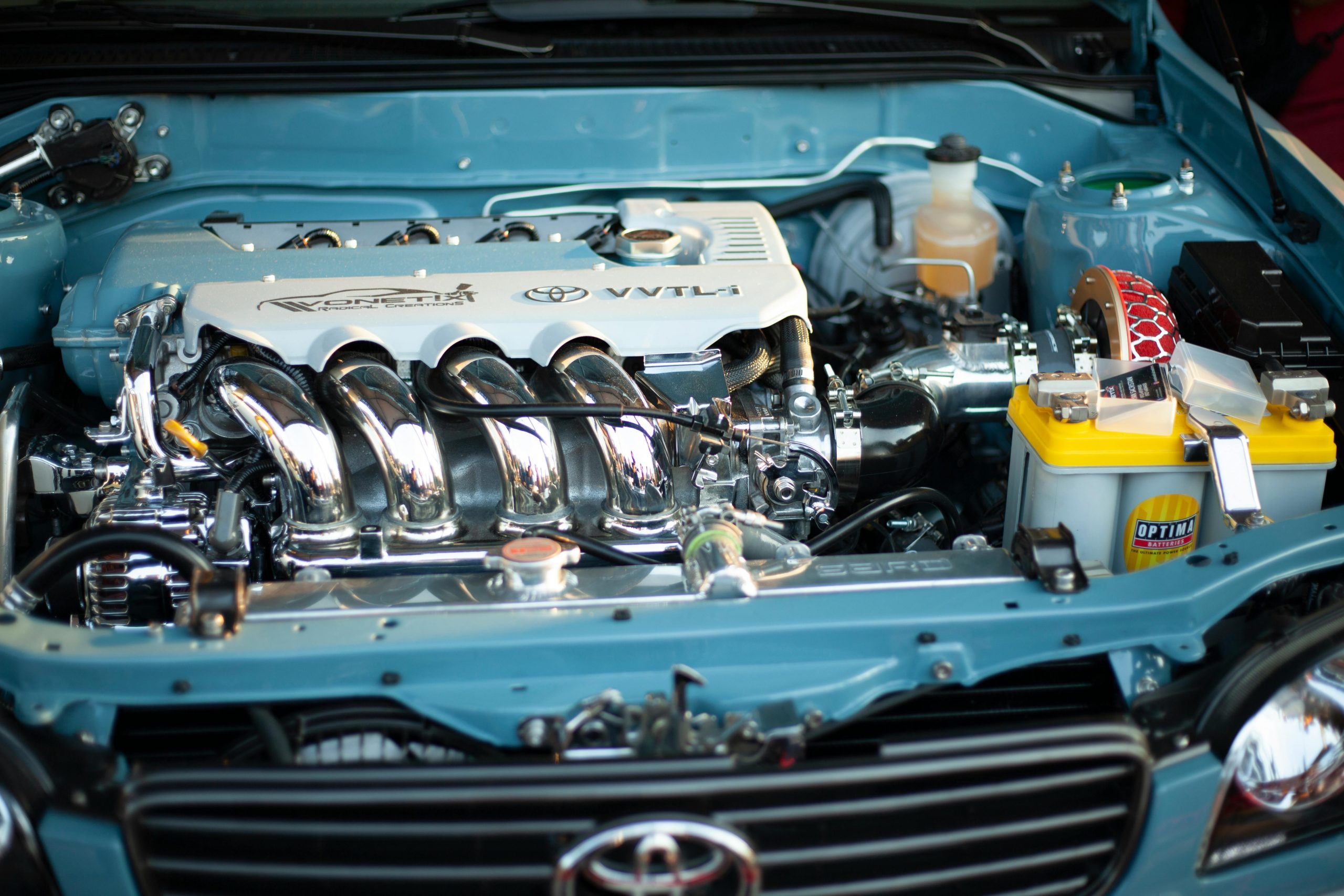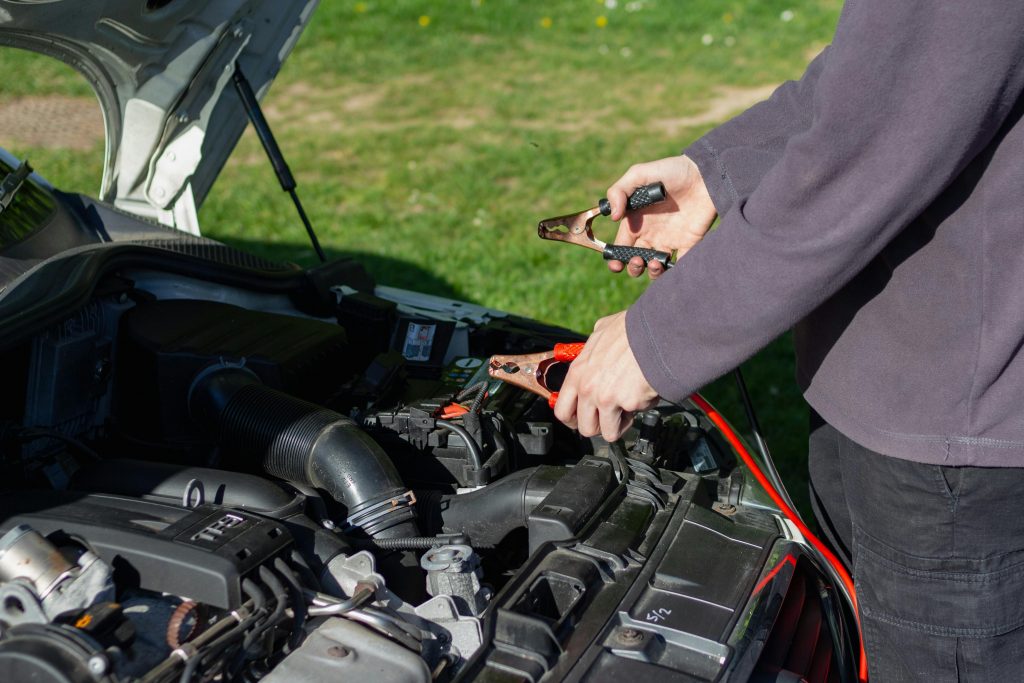Highlights
- Heat and humidity significantly reduce battery lifespan by accelerating chemical breakdown and corrosion.
- Regular inspection, cleaning, and proper charging prevent premature failure.
- Parking in shaded areas and maintaining electrolyte levels protect against heat stress.
- Anti-corrosion treatments and dry storage conditions help combat humidity-related damage.
- Choosing the right type of battery designed for high temperatures ensures better reliability.
- Simple preventive care can extend battery life and save money on replacements.

Car batteries are one of the most affected vehicle components in hot and humid climates. While drivers often prepare for winter battery failures, heat and moisture are equally destructive forces that can drain performance and shorten lifespan. High temperatures accelerate chemical reactions inside the battery, while humidity promotes corrosion and moisture buildup around terminals and connectors.
Fortunately, with a few smart maintenance practices and awareness of how the climate affects your car’s electrical system, you can avoid many common battery issues. This guide offers in-depth tips and techniques for maintaining car batteries in challenging weather conditions, helping you get the most out of your vehicle all year long.
Understanding How Heat and Humidity Affect Car Batteries
Hot and humid weather may seem harmless, but it creates a perfect storm for battery degradation. The combination of high temperatures and moisture causes both internal and external damage over time.
1. Heat-Related Battery Stress
When temperatures rise, the chemical activity inside a car battery increases. While this might temporarily boost performance, it accelerates the breakdown of internal components, leading to shorter battery life. Heat also causes battery fluid to evaporate faster, exposing plates and reducing the ability to hold a charge.
Common effects of heat exposure:
- Faster electrolyte evaporation.
- Warping or bulging of the battery case.
- Reduced internal resistance leading to overcharging.
- Increased risk of short circuits from expanding materials.
2. The Role of Humidity
Humidity contributes to corrosion, which can lead to poor connections, voltage drops, and eventual failure. Moisture buildup around the terminals promotes oxidation, turning shiny metal parts into green or white crusted surfaces that resist current flow.
Common humidity-related issues:
- Corrosion around terminals and clamps.
- Moisture seeping into seals, causing leaks.
- Short circuits due to damp wiring or connectors.
Choosing the Right Battery for Hot Climates
Not all car batteries are built for extreme weather. In regions with high heat and humidity, selecting the right type and design can make a major difference in performance and lifespan.
- Opt for Heat-Resistant Batteries
Certain battery types handle high temperatures better than others. For example:
- AGM (Absorbent Glass Mat) batteries are sealed and less prone to evaporation.
- Gel batteries use silica-based electrolytes that withstand heat better than standard lead-acid models.
- Maintenance-free batteries require less frequent topping up and resist internal fluid loss.
- Prioritize Reserve Capacity (RC) Over Cold Cranking Amps (CCA)
While CCA is crucial for cold climates, in hot environments, Reserve Capacity—the amount of time a battery can run accessories without the alternator—matters more. Higher RC values ensure stable performance in high temperatures.
- Check the Manufacturing Date
Always buy a fresh battery. Heat degrades batteries even while in storage, so choosing one manufactured within the last three months ensures you’re getting optimal performance.
- Consider Protective Casings
Batteries with heat-resistant casing or built-in insulation last longer under the hood. Look for products rated for tropical or desert climates.
Regular Maintenance Practices
Consistent upkeep helps offset the harsh effects of hot and humid conditions. Simple tasks can extend the life of your battery significantly.
- Keep Terminals Clean
Corrosion is the leading cause of poor electrical connections.
How to clean terminals:
- Disconnect cables starting with the negative terminal.
- Mix baking soda with water to create a mild cleaning paste.
- Use a wire brush to scrub away corrosion.
- Rinse with clean water and dry thoroughly before reconnecting.
Apply a thin layer of dielectric grease or petroleum jelly to prevent future corrosion.
- Inspect for Physical Damage
Regularly check for bulges, cracks, or leaks. Heat can distort the plastic casing, and humidity can cause internal condensation that leads to acid leaks. Any visible damage should be addressed immediately.
- Check Electrolyte Levels
In non-sealed batteries, low electrolyte levels cause overheating and reduced capacity.
- Top off with distilled water—never tap water, which contains minerals.
- Avoid overfilling to prevent spillage during high temperatures.
- Tighten Connections
Loose terminals can cause intermittent starting problems. Periodically ensure that clamps and bolts are secure without being overtightened.
- Test the Voltage
Use a multimeter or visit a mechanic to check your battery’s charge. A healthy battery should read between 12.4 to 12.7 volts when the engine is off. Anything lower indicates it’s time for maintenance or replacement.
Protecting Your Battery from Extreme Heat

Preventive measures can dramatically reduce the strain heat places on your car’s battery.
- Park in the Shade or Indoors
Whenever possible, park in a shaded area or garage to lower under-hood temperatures. Direct sunlight can raise battery temperatures to over 125°F, leading to rapid electrolyte loss.
- Use a Battery Insulation Kit
Battery heat shields or insulation wraps help regulate temperature by deflecting heat from the engine bay. These are especially helpful in southern or desert regions.
- Avoid Frequent Short Trips
Short drives don’t allow your alternator to fully recharge the battery, especially when air conditioning and accessories are running. Combine errands into longer trips to help the battery maintain its charge.
- Check Your Vehicle’s Cooling System
A malfunctioning cooling fan or blocked radiator can increase engine bay temperatures, putting additional stress on your battery. Ensure your vehicle’s cooling components are regularly serviced.
- Limit Electrical Load
Reduce the use of energy-draining accessories like high-powered audio systems, phone chargers, and lights when the engine is off. This preserves charge and prevents overheating during idle periods.
Addressing Humidity Challenges
In hot, coastal, or tropical areas, managing moisture is just as important as managing heat.
- Keep the Battery Dry
Condensation can form around terminals and wiring. Regularly wipe down the battery surface and ensure the cover or shield is intact.
- Use Anti-Corrosion Sprays
Apply corrosion inhibitors on terminals and connectors to block moisture exposure. Dielectric grease works particularly well for this purpose.
- Check the Battery Tray
Rust or moisture buildup under the battery tray can spread corrosion. Clean and dry the tray during inspections to prevent oxidation.
- Store Spare Batteries Properly
If you keep an extra battery, store it in a cool, dry location, away from direct sunlight and damp surfaces. Avoid placing it directly on concrete floors, which can encourage condensation.
Electrical System Care
Even the best-maintained battery won’t perform well if the rest of your vehicle’s electrical system is in poor condition.
- Inspect the Alternator
Your alternator maintains battery charge while driving. If it’s overcharging, it can cause overheating; if undercharging, the battery will drain quickly. Have it tested regularly to ensure it’s delivering between 13.7 and 14.7 volts while the engine is running.
- Check Wiring and Connectors
Humidity can corrode wiring and fuses, leading to voltage loss. Inspect connectors for discoloration, frayed wires, or rust and replace as needed.
- Limit Simultaneous Accessory Use
High-powered devices like air conditioning, infotainment systems, and headlights can overload your charging system when used together excessively, particularly during idle.
- Schedule Professional Inspections
Routine checkups at a battery store with good reviews can help identify potential issues before they become serious. Professionals use diagnostic tools to evaluate your battery’s health and charging efficiency accurately.
Warning Signs of Battery Trouble
Knowing the early indicators of battery failure allows for timely replacement before complete breakdown.
Common Symptoms:
- Slow engine crank: Indicates low voltage or poor connection.
- Dimming headlights: Suggests an alternator or battery output issue.
- Swollen casing: Caused by extreme internal pressure from heat.
- Corroded terminals: Hinders current flow.
- Sulfur smell: Indicates leaking electrolyte or overcharging.
When these signs appear, have your battery and charging system tested immediately to avoid being stranded.
When to Replace Your Battery
Even if your battery appears to function properly, replacement may be necessary based on climate conditions and performance.
- Average Lifespan in Hot Climates
In extremely hot and humid areas, most batteries last 2 to 3 years, compared to 4 to 5 years in cooler regions. Regular testing helps anticipate failure before it happens.
- Replace Based on Age, Not Just Symptoms
Many drivers wait for signs of weakness before replacing their battery, but preventive replacement ensures reliability. Replace batteries approaching the three-year mark if you live in a consistently hot climate.
- Check Warranty Coverage
Most batteries come with prorated warranties. Keep receipts and check terms to see if you qualify for discounted replacements.
Preventive Maintenance Habits
Developing good habits ensures your battery remains dependable even under harsh environmental conditions.
Routine Practices:
- Clean battery terminals every few months.
- Test voltage regularly.
- Avoid idling in extreme heat for long periods.
- Turn off electrical components when parking.
- Maintain proper coolant and oil levels to minimize engine heat.
These actions cost little but can dramatically extend your battery’s life and performance.
Conclusion
Maintaining car batteries in hot and humid climates requires proactive care and consistent maintenance. Heat accelerates chemical wear, while humidity promotes corrosion—two of the most common causes of premature battery failure. However, with routine inspections, proper cleaning, and mindful driving habits, you can significantly reduce these risks.
Choosing a high-quality, heat-resistant battery, protecting it from excess moisture, and regularly testing its charge are simple yet effective ways to ensure dependable performance. By following these steps, drivers in tropical or southern regions can enjoy smoother starts, fewer breakdowns, and a longer-lasting battery overall.

